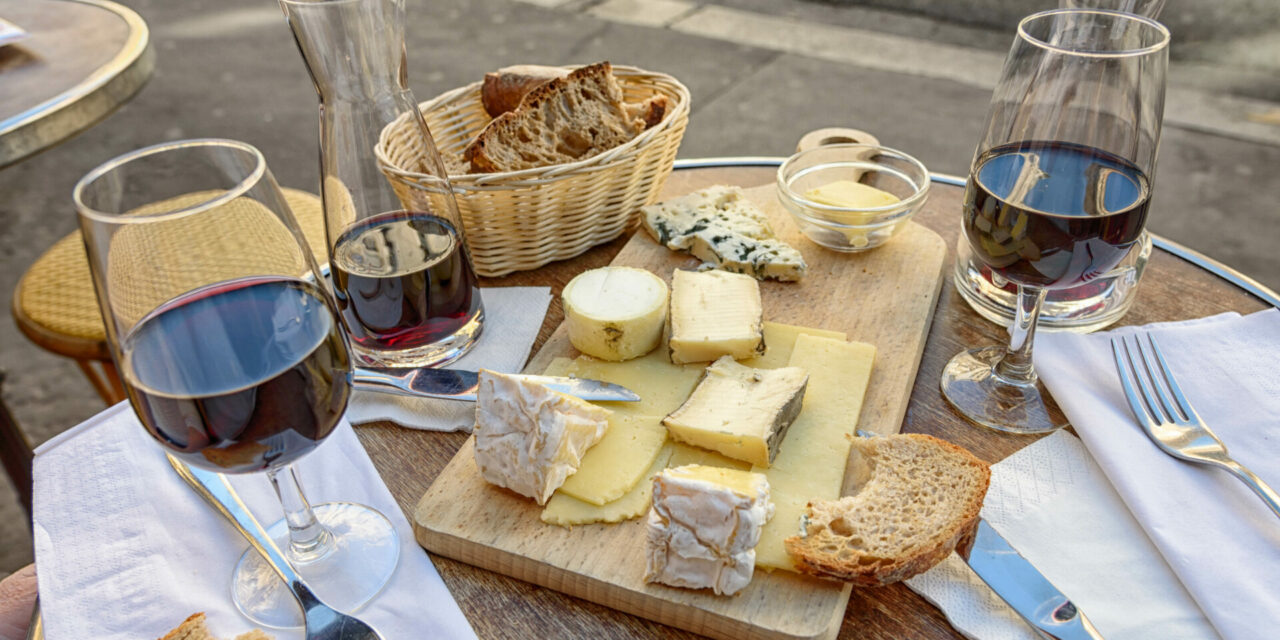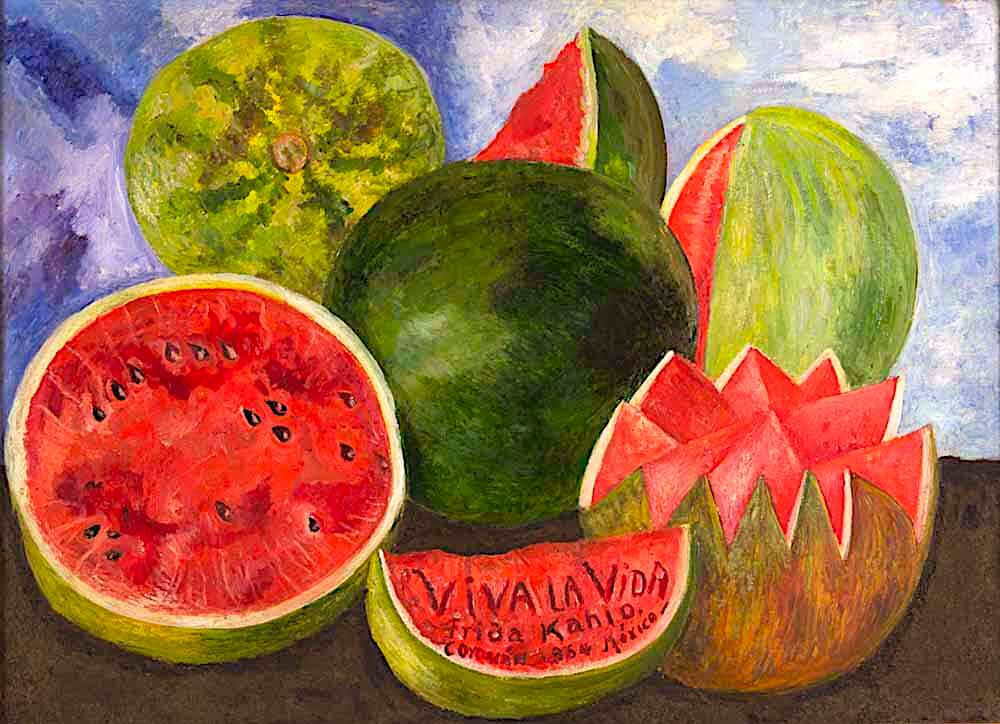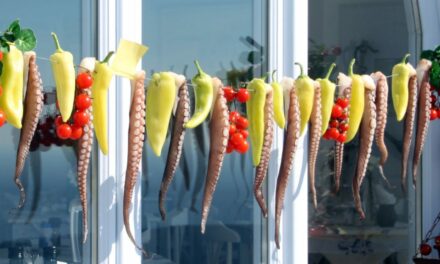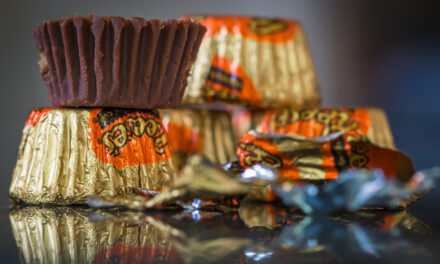Paris Sidewalk Cafe-Cheese, Wine, Bread, photography by Mustang Joe. Public domain via Flickr.
Blue Velvet: in Defense of the Blue Veined Cheeses
Winding through the narrow cobblestone streets of Rome one summer, I found many charms- Murano glass jewelry, Pinocchio puppets, and pizza morning, noon, and night. But there inside the beckoning window of an Italian ice shop was something spectacular that I had never fathomed or imagined: nestled among more familiar delights like limone, pistachio, and tiramisu was a dream come true. Blue cheese gelato.
Blue cheese is one of those polarizing culinary affairs, like oysters or cilantro. People are either gaga over the stuff, or they’re disgusted.
The gaga minority- that’s me- adore the funky, salty, plush melt in your mouth magic of blue cheese. We pride ourselves on our mature, cosmopolitan palate. Most of us secretly agree with Pedestrian TV writer Louis Costello, who wrote, “I have a strong suspicion that the people who hate blue cheese are the same culprits who think it’s fine and dandy to boil an egg in the microwave.”
I passionately believe that the finest things in life are acquired tastes- dense espresso, intense red wines, slippery sushi, Kalamata olives, Havana cigars.
But I have to concede that some tastes cannot be acquired by all. Science started mapping lingual papillae- our tastebuds- around the 1960s and found considerable variations. Those with the most fungiform papillae are colloquially called “supertasters.” They may be especially averse to bitter and pungent tastes, like Brussel sprouts and the blue cheeses.
Team Never describe the blue veined divinities such as Roquefort, Stilton, or Valdeon as tasting like stinky feet, barf, or worse, feces. And even though this makes my blood boil- “Go enjoy your Krap dinner,” I seethe inwardly- they’re not wrong.
Blue cheese is made with penicillium mold. It’s filled with mycotoxins and bacteria. Brevabacterium linens is precisely the same stuff that stinks up your socks. The cheeses contain butyric acid, something that is also made in your stomach and featured in your vomit. There are even small amounts of skatole- a molecule in mammal and bird waste that causes that distinct revolting odour.
Well, when you put it that way!
But, when in Rome…
Can you believe I still walked through those doors and ordered that gorgonzola gelato?
And it was gorgeous.
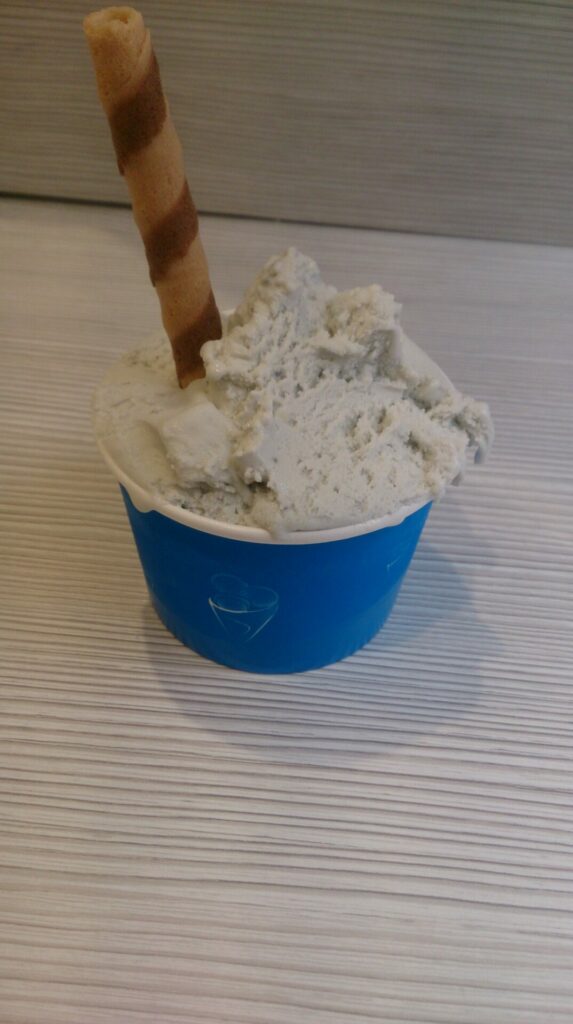
Blue Cheese Gelato in Rome, Italy. Photo taken by author.
Blue cheese surprises. It’s the boldest morsel on the board, to be sure. That’s why it’s always paired with pears, a mild companion that helps moderate the sharpness. But it always proves a perfect dance partner in unexpected circumstances. The first time I had blue cheese on a thin crust pizza I thought I had died and gone to heaven. And there’s a whole cult of burger lovers who want them piled with blue and mushrooms. A melting slab of blue is even better on a rare steak fresh from the grill.
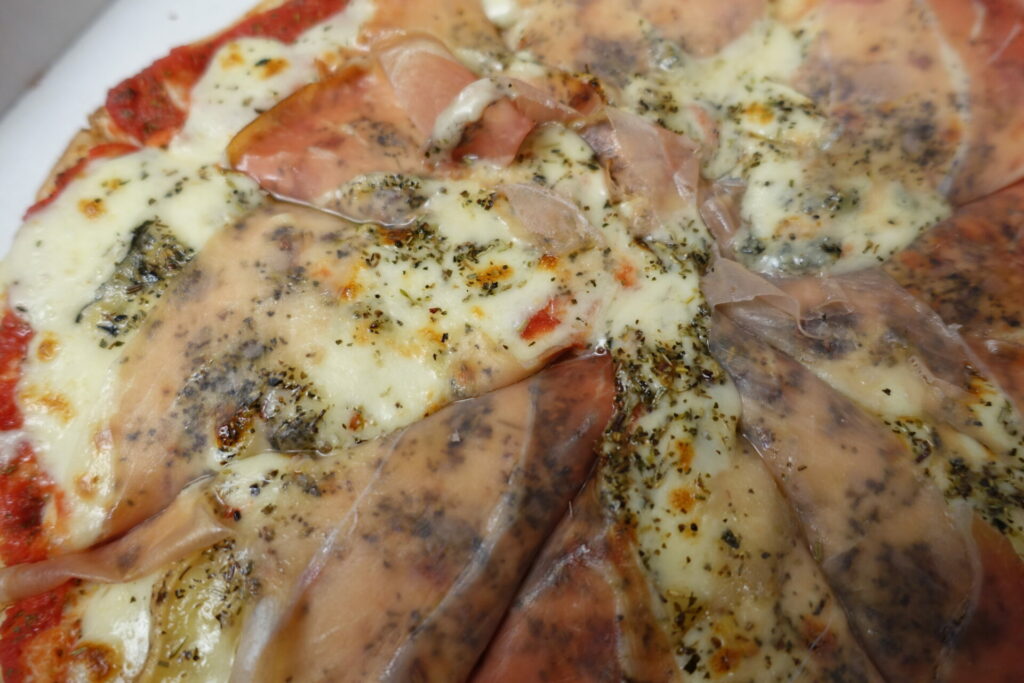
Gorgonzola and Speck Pizza, Guilhem Vellut from Paris, France, CC BY 2.0 via Wikimedia Commons
Blue cheese adds panache to a spinach salad, especially savory next to the almonds or strawberries. Blue cheese and mandarin oranges make a stunning couple. Try it with bananas! Mashed potatoes at my house are made with butter and blue cheese.
Cauliflower and blue cheese soup is a thing. That’s a one up on the classic combo for soup, broccoli and cheddar. And on top of all that, a bevy of white wines like Riesling make beautiful music with Cambozola and Shropshire Blue.
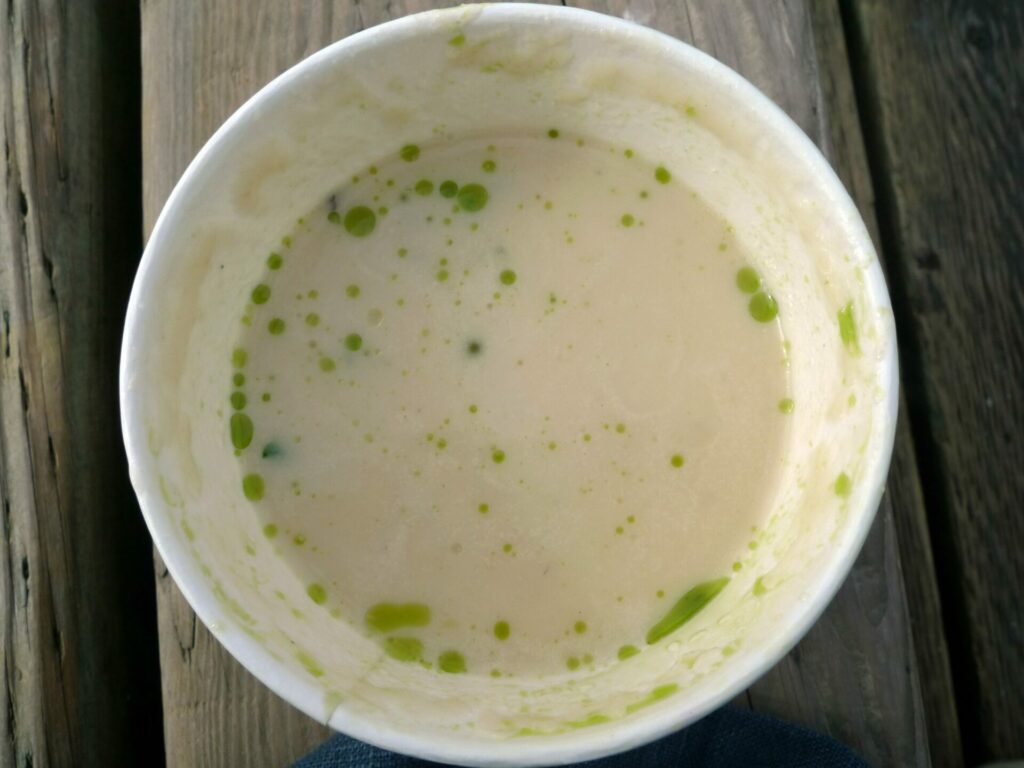
Cauliflower and Blue Cheese Soup, by Ruth Hartnup, Canada, CC BY 2.0 Wikimedia Commons
And so I wondered, in ice cream? Well, why not?
In Bobcaygeon, Ontario, there is a tiny treasure of cheese splendour, The Grilled Cheese Hideaway. People come from all over cottage country, and even drive from Toronto, for one of these gourmet gems. One of their best-selling sandwiches is The Blue Velvet, a lush beauty stuffed with red onions, blue cheese, avocado, greens, and balsamic vinegar.
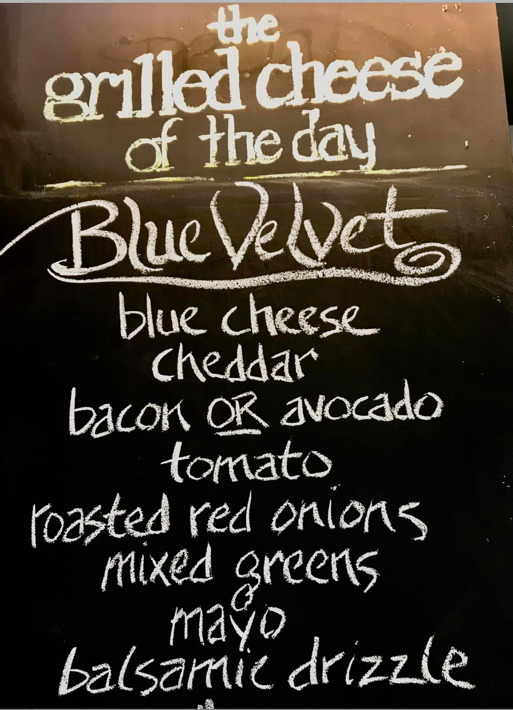
Blue Velvet at the Grilled Cheese Hideaway
If all these possibilities are making your mouth water, you’re in the minority, along with yours truly. Blue cheese makes every list for the most hated foods in the world.
Then again, those lists are usually topped with olives, oysters, and onions. All staples of any sane kitchen.
Life is too short to squander on the squeamishness of others. Dig in to that glorious stinking pizza! Say yes to pasta smothered in creamy, steamy Stilton.
After all, the grand champion cheese of the world is blue. In 2020, American Rogue Creamery’s Rogue River Blue impressed a panel of international cheese connoisseurs in Italy, above hundreds of other fair contestants from around the globe. A blue veined marvel was declared the best cheese in the world.
Right here at home we have major award winners in the blue category. Dragon’s Breath Blue Cheese from That Dutchman’s Cheese Farm in Nova Scotia is a heady medley of tender and intense. It nabbed best blue at the Canadian Cheese Awards in 2016. The makers of this cheese recommend consuming it with simplicity, on a slab of sourdough bread, and I concur. Unfortunately, new Canadian food regulations mean this blue cheese crack can no longer ship outside of their province, so you’ll have to plan a visit to the east coast.
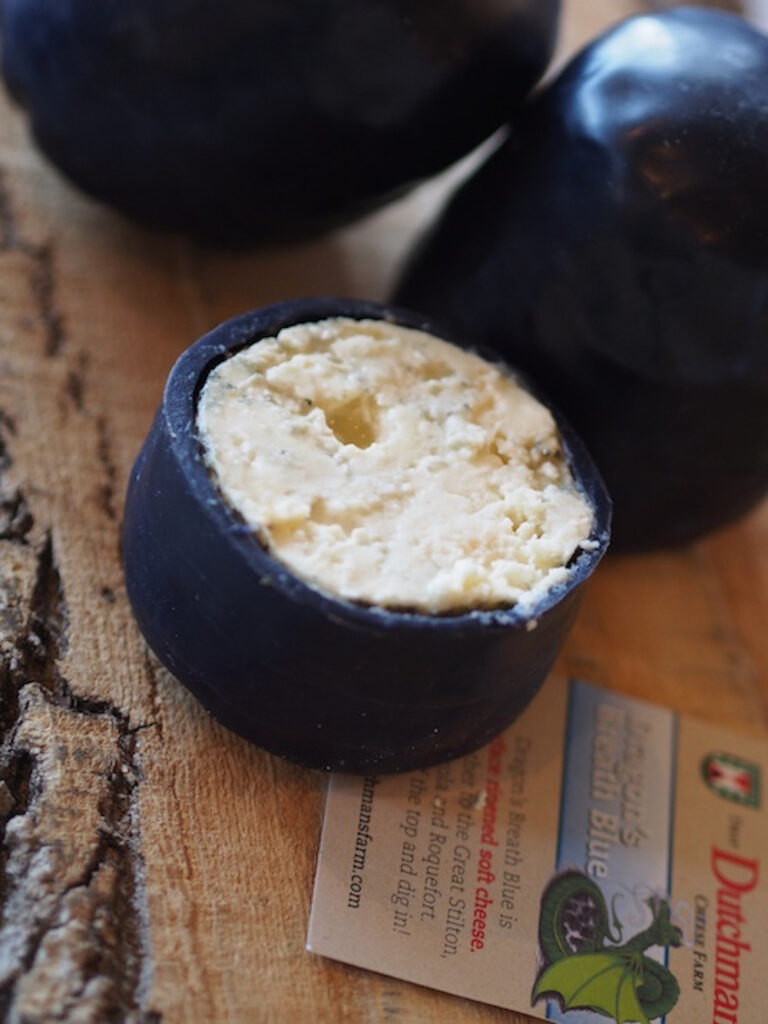
Dragon’s Breath Blue Cheese, photo by Pearly Pirie CC BY-NC-ND 2.0 via Flickr
The only time a Canadian won the best in show at the American Cheese Society Awards was in 2015. Ontario’s Margaret Peters Morris reigned over more than 1700 cheeses with her Celtic Blue Reserve. This beauty treaded more delicately than blues usually do, while still maintaining an award-worthy complexity.
More familiar perhaps is the Bleu Benedictin, a Canadian classic since 2000. The pride of the Abbey of St. Benedict in Lake Memphremagog in Quebec, this monastery masterpiece is often described as “mushroomy.” It has placed countless times at various foodie festivities, including first place one year and second another at the Royal Winter Fair. It was Grand Champion at the Canadian Cheese Grand Prix, winning best blue in the same competition twice in other years. It took first prize twice in the British Empire Cheese Show. The list goes on.
But what is this blue thing that makes some of us sing and the rest of you retch? Blue cheeses are semi-soft cheeses from cow, sheep or goat milk, with green or blue veins from edible Penicillium mold. Blue cheeses are infamous for their ripe, salty, funky scent and taste, although there is an incredibly wide range of varieties and many of them are very mild. The origin story is not clear but we think it was a happy accident when some cheeses stored in caves picked up the local mold.
The sensational strangeness of blue veined cheese flavours may seem like a recent foodie invention. But it goes way back. At least 2700 years.
This we know for certain. Recent feces findings from Iron Age miners in the Austrian Hallstatt mountains show the workers from the world’s oldest salt mines had blue cheese and beer for lunch.
Sounds good to me!
Penicillium roqueforti was found in the ancient doodoo, along with beer molecules, barley, beans, fruits and meats. The same strain is used today in the legendary sheep milk Roquefort cheeses of southern France.
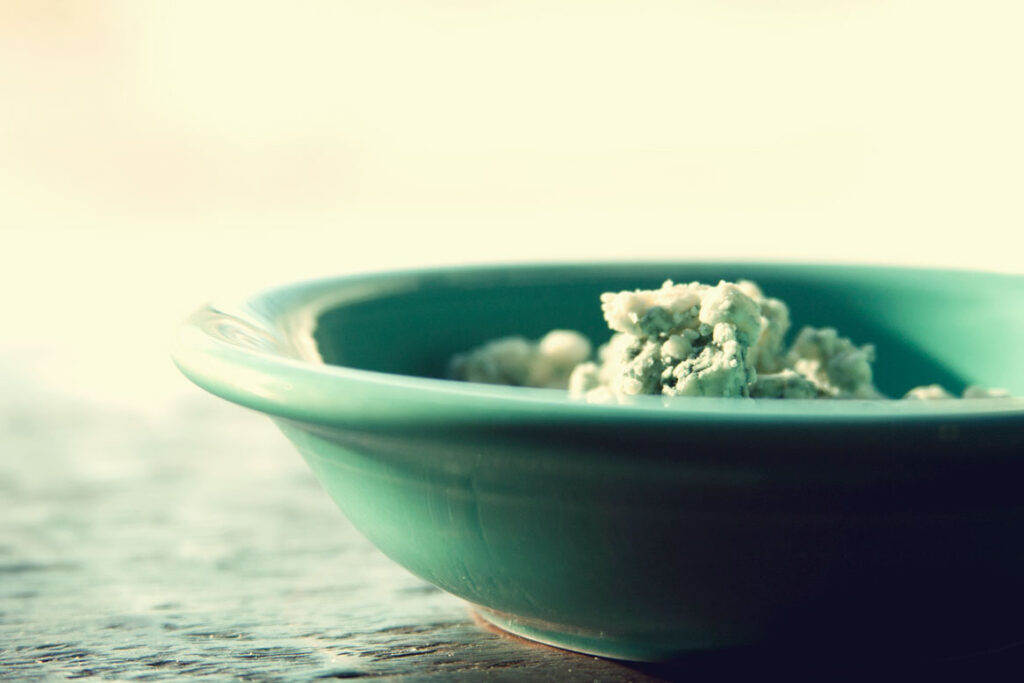
Blue Cheese, by Liz Davenport (CC BY 2.0)
Get to know the blues better by creating a blue cheese board at your next soiree. You can satisfy all palates by simply having a separate board for the strong stuff, so the milder cheeses don’t get drowned out by the blustery blues.
Despite the alarming possibilities raised by talk of mold, rot, bacteria, barf, and bathrooms, it is absolutely okay to enjoy the blue world if you are one of the lucky ones who love it.
Butyric acid does give that je ne sais quoi to upchuck, because it is made in the gut. But don’t let that scare you. When someone smugly smears the Stilton at your next wine and cheese party, fire back with the facts. Yes, butyric acid is found in barf and b.o. It’s also present in animal fats and plant oils. It is, after all, a short chain fatty acid. Your body makes the most butyric acid digesting plants, by the way, from asparagus to radicchio. It’s an important natural process. Butyric acid is nothing to avoid- it’s absolutely essential. It’s so vital that breast milk is full of it. The more you make, the more you eat, the better your gut health. It also improves your immune system, lowers inflammation, and helps prevent cancer.
But what about the bacteria?
What about it? Our microbiomes are teeming with bacteria and so is everything we eat, touch, and breathe. Most bacteria have multiple roles, so it is no surprise that Brevibacterium linens happens to live on your feet and also in ancient cheeses. Brevibacterium linens produces the proteinases, peptidases, and lipases in blue cheeses- those are living enzymes, needed to digest and absorb nutrients. The most beneficial foods are veritable zoos of enzymes and microbia.
Returning to the mold- we already know how penicillin turned out for the human story. The blue mold won’t kill off any major illnesses, however, as the aging process neutralizes medicinal activity. But nor will the inert substances trigger allergies.
And the skatole? According to the American Chemical Society, “Skatole, or 3-methylindole, is a foul-smelling constituent of mammalian feces; it is produced by the decomposition of tryptophan in the digestive tract.” So, sure, ewwwww.
Then again, skatole is frequently found in…flowers. Jasmine is full of it, to name a fragrant favourite. Bees love it. Lighter concentrations smell like orange blossoms.
It’s present in saliva, too- not just on the way out!
Skatole is a little bit like ambergris in classic perfumes. Ambergris, which is whale vomit, I kid you not, is more valuable than gold to perfumiers, being a hard to come by substance. It stinks, but somehow, small quantities make perfumes rich and heavenly. Skatole is used this way in global perfumes, too.
Because whale barf is tricky to collect and must be found on beaches, and skatole can be manufactured, it is commonly used to enhance your fragrances! It is also used to enhance flavours in ice cream and other sweet treats. And it occurs in many foods due to microbial and other natural processes. So yes, there are small amounts in blue cheese…and all your other favourite cheeses. They also occur naturally in beets, wine, coffee, chocolate, apricots, shrimp, mushrooms, and beer…
And there it is.
More cheese, please!
Lorette C. Luzajic


